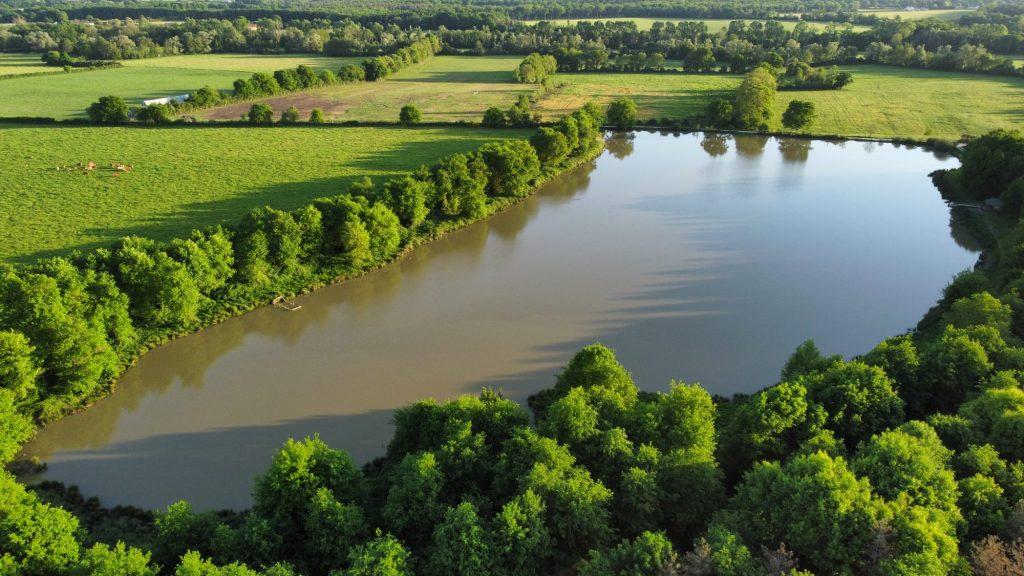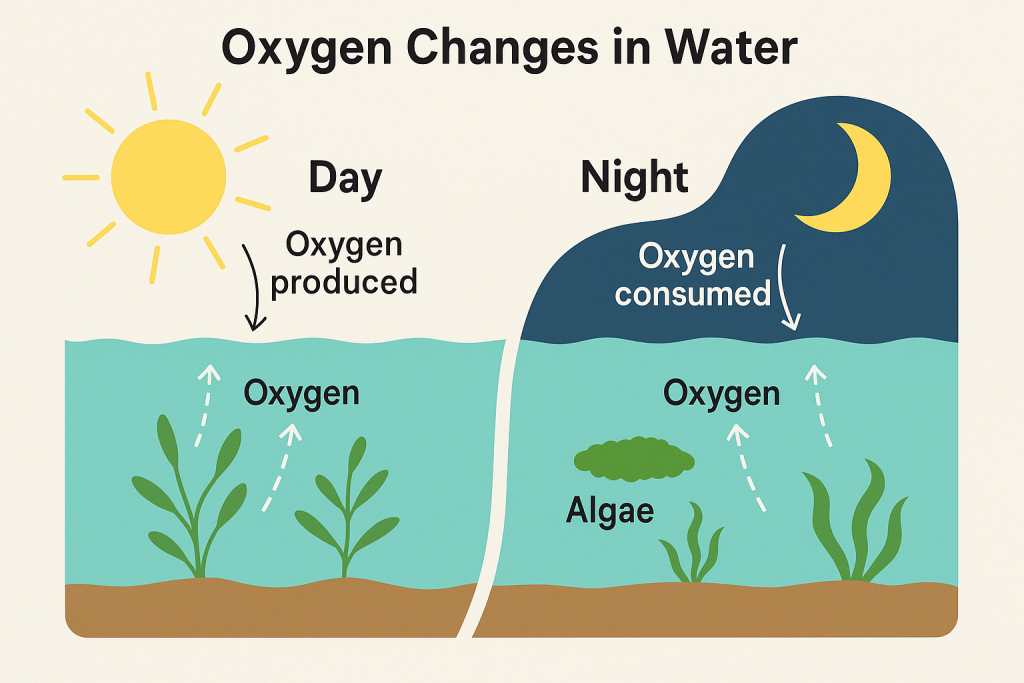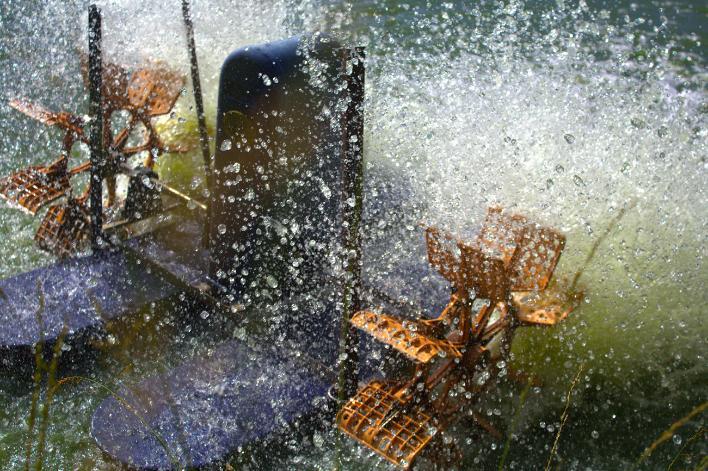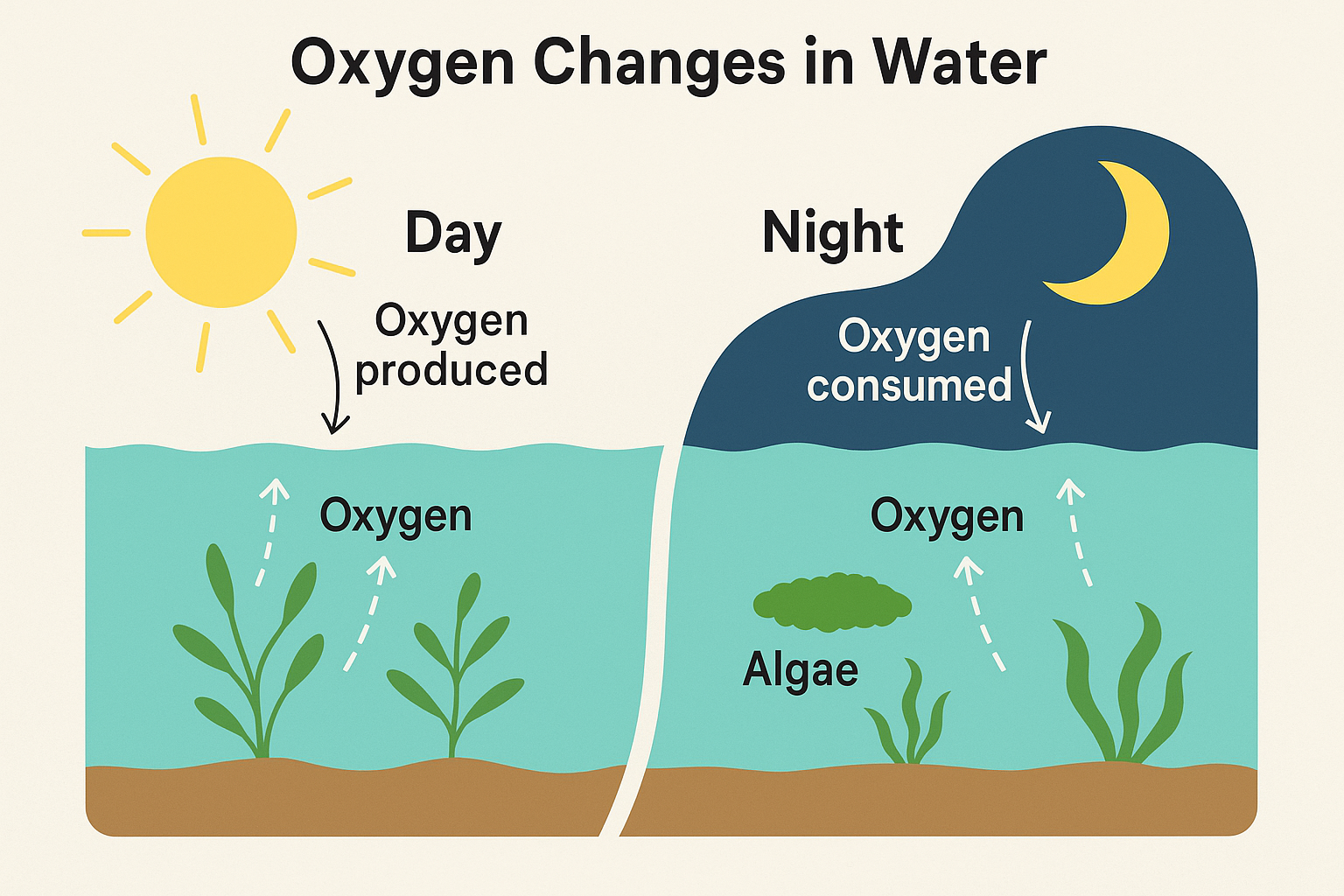Whether you already run a carp fishery or you’re thinking about buying a carp fishery, understanding how oxygen behaves in stillwater lakes is essential. Even experienced fishery owners can get caught out by sudden summer crashes, while newcomers are often unaware of just how quickly things can go wrong. This guide breaks the subject down in a practical, no-nonsense way that’s useful for both seasoned managers and first-time buyers.
Why Summer Can Put Carp at Risk
Summer can be a brilliant time for carp fisheries. Long days, warm water, and masses of natural food mean fish feed hard, grow well, and generally look their best going into autumn. But for every bonus summer brings, it also throws in a few hidden risks — and the biggest one, by far, is a sudden drop in oxygen. It doesn’t take long for fish to get into trouble. A few hours of poor oxygen can cause stress, a spike in disease, or in the worst cases, a serious fish kill. The frustrating part? Most oxygen-related crashes are preventable if you know what to look for. Below is a practical (and very down-to-earth) breakdown of how oxygen works in stillwaters, why summer can be dangerous, and what you can do to protect your lake.
In hot weather, lakes become incredibly productive. Weed grows fast, algae blooms, and everything under the surface seems to be feeding, breeding, or multiplying. That’s great in some ways — but it also means a lot of oxygen is being used and produced in different parts of the day. Carp, like any fish, need consistent oxygen. If levels dip too far, even for a short period, it can spell trouble. Many fish kills in summer aren’t caused by pollution or anglers — they’re simply the result of water turning unstable and running out of oxygen faster than it can be replaced.

How Plants and Algae Play Into the Problem
A lot of lakes have high nutrient loads — especially phosphates — and long sunny days mean plants and algae grow thick and fast. During the day they photosynthesise, giving off oxygen. Some lakes even fizz with tiny oxygen bubbles if the sunlight is strong enough — DO (dissolved oxygen) meters can show 120%, 150%, even over 200% saturation. But the moment the sun goes down, the whole system flips. Plants and algae start respiring instead of photosynthesising. That means they use oxygen rather than produce it. At night, everything in the lake — plants, fish, insects, bacteria — is taking oxygen out of the water. By early morning, levels can crash to their lowest point of the day. This is why the worst oxygen crashes almost always happen between midnight and sunrise.

Temperature Makes Everything Worse
Warm water holds less gas — simple as that. A fizzy drink in the fridge will release a gentle stream of bubbles when you open it. Leave the same drink in the sun and it erupts everywhere. Lakes behave the same way. The warmer the water gets, the less capacity it has to carry oxygen. So a hot, bright day that boosts oxygen at lunchtime can be the same day that produces a dangerous drop at 4am.
How Oxygen Swings Work in Stillwaters
In stillwaters full of weed and algae, you can get dramatic day-night swings. It’s not unusual to see massive oxygen peaks in the afternoon and equally steep plunges before dawn. Fish don’t care about percentages — they need an absolute amount of dissolved oxygen. As a rule of thumb, coarse fish usually enter the danger zone below 3mg/l, and trout below 5mg/l. Once DO drops under those numbers, fish begin to struggle very quickly.

Storms, Cold Rain and Algal Crashes
Thunderstorms are a huge red flag for fishery owners. Heavy rain hitting hot lake water can flip the whole water column upside down — a process sometimes called “turnover”. Cold water sinks, warm water is forced up, and silt, rotting debris, and dead algae get mixed into the upper layers. If algae die off suddenly — either from lack of light, nutrient collapse, or predation from water-fleas (Daphnia) — the bacteria feeding on them can strip oxygen at an alarming speed. When this happens, fish often gather under the surface and “gasp” in big groups. Unfortunately, this is normally a sign the lake needs help immediately.

Sheltered Lakes Are More Vulnerable
Wind is one of the best natural aerators a lake can have. A big, windswept water rarely suffers from oxygen crashes. But a lake surrounded by trees, high banks, or buildings won’t benefit from wind mixing the surface layers. These enclosed waters are far more likely to run into deoxygenation problems during summer.
Practical Prevention: Stopping Problems Before They Start
There’s no magic cure, but good management massively reduces the risk.
Controlling Silt and Nutrients
Physically removing silt is effective but messy and expensive. Chalk or limestone treatments are cheaper and help buffer acidity. Raking out autumn leaves before they sink prevents nutrient build-up. Diverting streams around the lake (or adding silt traps) reduces incoming muck.
Managing Aquatic Plants
Small lakes can be raked or cut manually — but it’s labour-intensive. Lake dyes can help reduce excessive plant growth and are widely used now. Barley straw (or barley extract) can prevent algal blooms from getting out of control.
Improving Wind and Water Movement
Removing overcrowded or low-value trees allows wind to reach the lake. Species like willow and alder respond well to pollarding or coppicing, and opening up the banks can make a big difference.
Aeration: The Most Reliable Safety Net
Aerators come in several forms: paddle wheels or fountains (surface aeration), injectors or “blowers” (forced air), and diffusers or air stones on the lakebed (fine-bubble aeration). The key is breaking water or air into lots of small droplets or bubbles, which dramatically increases oxygen transfer. Power options now include mains supply, solar, wind-powered chargers, battery systems, and generators. If you only invest in one major piece of fishery infrastructure, let it be aeration.

Stocking Levels Matter More Than Many Think
A lake can only naturally support so many fish. Over-stocking pushes everything closer to the edge, especially in summer. Keeping realistic stock levels — or periodically removing fish — gives the whole system more breathing room.
Monitoring Oxygen Daily
A handheld DO meter is one of the best tools a fishery owner can have. Check levels at the same time each day, record them, and look for trends. If you see very high daytime readings, be alert — it often means a sharp night-time drop is coming.
Emergency Planning: Don’t Wait Until Fish Are Gasping
The worst time to make a plan is when fish are already in distress. Every fishery should have an emergency procedure ready to go. A simple plan should include where pumps and aerators are stored, who has access to them, names and numbers of people who can help, power or fuel arrangements, and contact details for local services (including the Fire Service if they’ve agreed to assist).
Using Pumps in an Emergency
A pump spraying one big jet of water isn’t very effective. What you want is lots of small droplets. Spray the water against a board, rocks, a metal sheet — anything that breaks it up. This massively increases oxygen transfer. Be prepared to run pumps for days if it’s an algal crash. Decomposition continues long after the water looks “better”.
The Final Word
Keeping oxygen levels stable is one of the most important parts of running a healthy carp fishery, whether you already own a lake or are thinking of buying one. With a bit of planning and regular monitoring, most problems can be avoided long before they ever threaten your fish.
